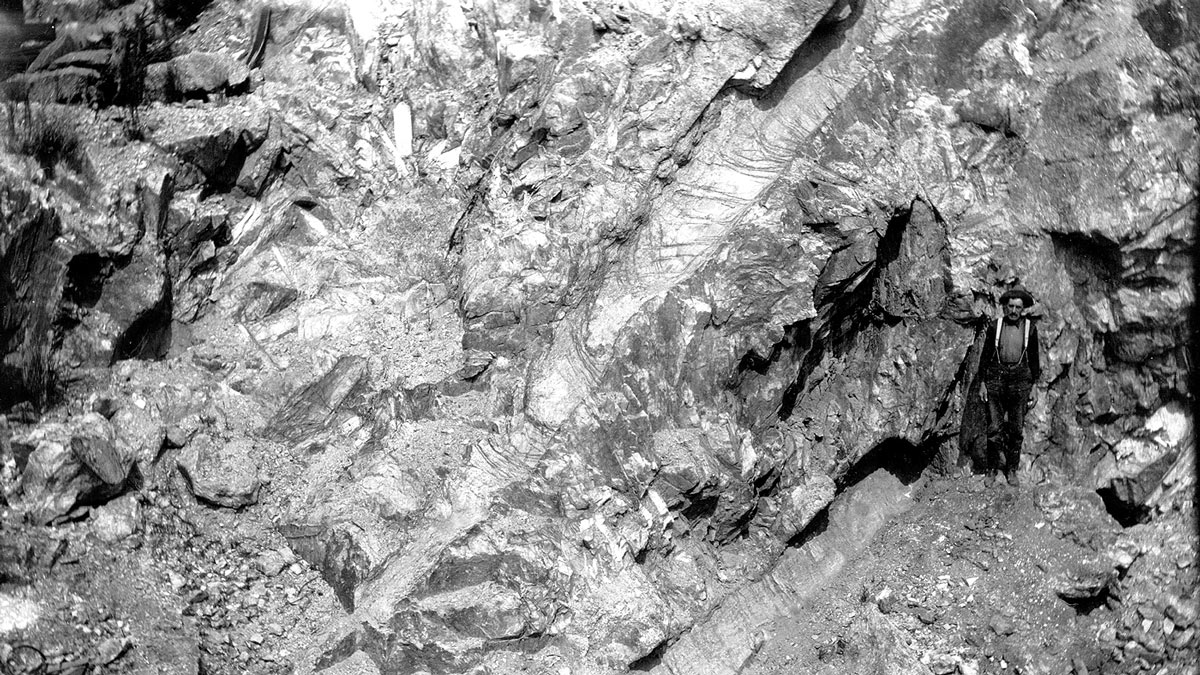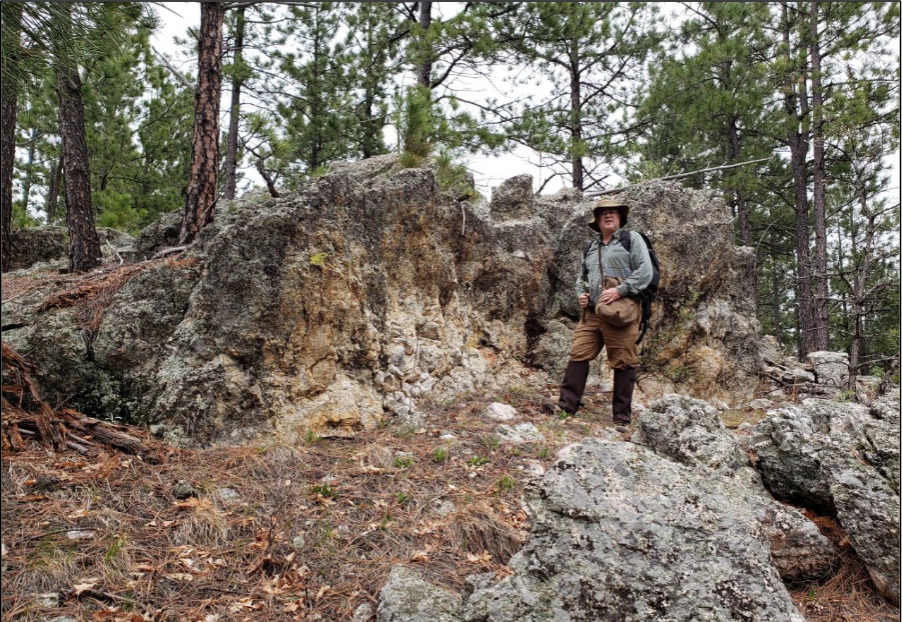Patriot finds 200m potentially lithium fertile pegmatite outcrop, 3.5km from some of the largest spodumene crystals ever found

A mine worker (centre right) standing next to the moulds of two gigantic spodumene crystals at the Etta mine in 1904, only km’s away from Patriot’s Keystone claims. (Photo: US Geological Survey, Via Wikimedia Commons)
- PAT uncovers several pegmatite outcrops at Keystone, including one that can be traced at surface for over 200m along strike
- Keystone’s neighbours include several historic high grade hard rock lithium mines
- Systematic sampling will kick off at the project next month
Early-stage mapping and sampling has identified several potentially lithium fertile pegmatite outcrops at Keystone, just 3.5km from the historical high-grade Etta, Edison and Hugo lithium mines in the Black Hills in South Dakota.
The Etta mine was an important global lithium source between 1898 and 1960. At times, it was the main source of spodumene in the world and yielded the largest (up to 14m long) spodumene crystals ever mined.
Recent drilling success by fellow Black Hills explorer Iris Metals (ASX:IR1) at the Beecher project – including 60m at 1.21% Li2O — confirms the areas prospectivity.
Despite this, Patriot Lithium’s (ASX:PAT) Black Hills projects are underexplored by modern standards.
“The recent impressive drilling results achieved in the region by Iris Metals reaffirms the Black Hills as a highly prospective lithium district,” CEO and MD Nicholas Vickery said.
“The results released from the Beecher project nearby give us even greater confidence in the early exploration work that Patriot is undertaking.”
Mapping those pegmatites at Keystone
The largest potentially lithium fertile pegmatite outcrop uncovered by Patriot’s initial reconnaissance mapping and sampling program can be traced at surface for over 200m along strike.
This is a new find not previously mapped and analysed, the company says.

The company says the fractionated pegmatites inspected at Keystone are characterised by their large crystal sizes, 10s to 100s of centimetres in diameter, and presence of tourmaline.
The reconnaissance also successfully confirmed the potential lithium fertility of several pegmatites based on portable X-ray fluorescence (pXRF) readings of the feldspar and mica crystals in these pegmatites.
“Recent early-stage reconnaissance around the Keystone region has confirmed promising K/Rb (potassium to rubidium) ratios, a proven indicator for lithium fertility, within significant pegmatite outcrops only 3.5km from the historic high-grade Etta, Edison and Hugo lithium mines that the team is keen to explore and define further,” CEO and MD Nicholas Vickery said.
These constitute high priority targets for follow-up rock chip sampling and mapping, the company says.
Systematic sampling starts in September
A follow-up program of systematic mapping and sampling of the pegmatite dykes is planned to commence in September, with assay results to reported to the market as soon as available.
Mapping and sampling will also be undertaken throughout the remaining Keystone and Tinton West projects, including the recently staked claims.
“Patriot will be ramping up its efforts in the Black Hills in the coming months,” Vickery said.
“Mapping and sampling programs are scheduled across the remaining Keystone and Tinton West claims, including the recently staked claims that extended Keyston claims by 15 km2 and the Tinton West claims by 4km2.”
This article was developed in collaboration with Patriot Lithium, a Stockhead advertiser at the time of publishing.
This article does not constitute financial product advice. You should consider obtaining independent advice before making any financial decisions.
Related Topics

UNLOCK INSIGHTS
Discover the untold stories of emerging ASX stocks.
Daily news and expert analysis, it's free to subscribe.
By proceeding, you confirm you understand that we handle personal information in accordance with our Privacy Policy.








